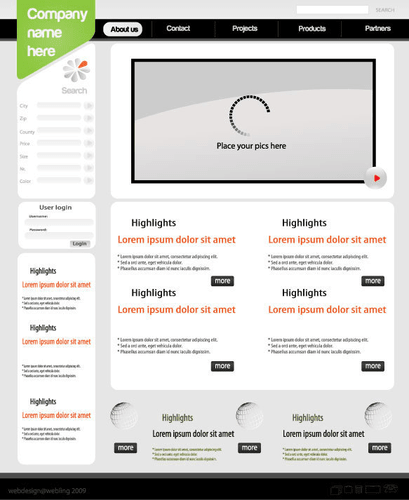Unlike most software for nonprofits, NonProfitPlus includes inventory management, which is crucial if you stock merchandise (like T-shirts and mugs) to raise money or reward donors. On the other hand, NonProfitPlus doesn’t list any pricing on its site—as with Sage Intacct, you have to get in touch with a representative for a quote. Customers report paying more than $600 a month for NonProfitPlus’s full suite of features, so if you’re looking for affordable nonprofit software, NonProfitPlus probably isn’t it. One of the key benefits of these software solutions is their ability to grow with your organization.
Why is having professional accounting important for nonprofits?
These regulations are designed to ensure transparency, accountability, and proper use of funds, which is crucial for maintaining public trust and securing donations. Understanding the specific requirements for financial reporting and tax compliance is essential for effective nonprofit accounting. Effective bookkeeping is essential for the success and transparency of nonprofit organizations. Navigating the complexities of nonprofit accounting is essential for the sustainability and transparency of any organization in the sector. accounting services for nonprofit organizations Understanding the unique financial reporting requirements and regulations can help nonprofits maintain compliance and build trust with stakeholders.
Nonprofit vs for-profit accounting
For-profit accounting also focuses on revenue sources and production costs, such as materials and labor. Just like the statement of financial position, the statement of activities keeps net assets that have conditions and stipulations attached to them separate from unrestricted funds. A good budget can act like a roadmap for a nonprofit, determining where and when the organization will deploy its resources, and whether it’s on the right track financially. When you reconcile your bank accounts, all you’re doing is comparing each transaction from your bank statement with the ones you have in your books.
- The easiest way to do this is with quality accounting software that helps create standardized reports.
- Nonprofit accounting has many unique elements, factors, and requirements that organization executives need to consider to be successful.
- As you collect funds, pay expenses, and prepare reports, keeping these principles in mind is vital.
- Essentially, you should view bookkeeping as the financial oversight process that’s necessary for operating your nonprofit daily.
- What likely drove you to join was (and continues to be), the nonprofit’s mission.
- Key components include a well-structured chart of accounts, fund accounting, accurate tracking of donor contributions and grants, and regular financial reporting.
III. Essential Financial Statements for Nonprofits
In creating a COA, nonprofits must consider their unique operational needs and funding sources. This includes designating accounts for various revenue streams, such as grants, donations, and program income. S activities, including program services, administrative costs, and fundraising expenses.
Accounting software designed for the nonprofit sector can help manage funds, track expenses, and generate reports efficiently. Embracing these tools allows organizations to focus more on their mission while ensuring their financial practices are sound and how is sales tax calculated compliant. In developing a COA, nonprofits should also consider their specific needs and activities. S unique revenue streams and expense categories, ensuring that all financial transactions are accurately captured. Regularly reviewing and updating the COA is also a best practice, as it allows organizations to adapt to changing financial circumstances and reporting requirements.
Some donors choose to judge nonprofits based solely on their overhead expenses. However, this narrative is changing in the sector as more people become aware that overhead is a necessary expense for growth. Encourage your donors to judge your organization based on your impact in the community rather than how much you spend on fundraising and administrative expenses. In this document, you’ll record your nonprofit’s revenue and expenses from the year, to demonstrate how finances have been utilized. Essentially, the Form 990 is the IRS’s method of evaluation to make sure your nonprofit is financially honest and legitimate. Mostly, I’ve seen incorrect financial information being used to run an organization.
Chart of Accounts
The accrual accounting method records the amounts when the transaction occurs, regardless of when the money is transferred. Many consider the accrual method a more transparent and accurate method of depicting a nonprofit’s financial activity. When beginning nonprofit accounting, the first decision is whether to use the cash, accrual, or fund accrual accounting method for recording income and expenses. Non profits should seek professional help for complex financial transactions, regulatory compliance, audit preparation, and as the organization grows and financial management becomes more complex. Professional bookkeepers and accountants provide expertise and ensure accuracy. A well-structured chart of accounts (COA) is fundamental for efficient bookkeeping in non profit organizations.
By following established templates, organizations can maintain consistency and clarity Food Truck Accounting in their reporting. For instance, contributions may be recognized when received, while grants might require adherence to specific terms and conditions before revenue can be recorded. This complexity necessitates a thorough understanding of accounting principles and donor agreements to ensure compliance and accurate financial reporting. Strong nonprofit accounting practices are the foundation for efficient financial management. Proper accounting and financial management are necessary for nonprofit organizations to stay viable and remain accountable to the public, donors, funders, and other stakeholders.






